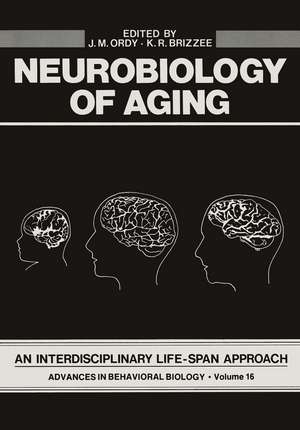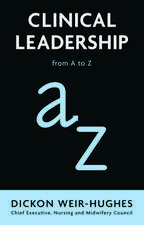Neurobiology of Aging: An Interdisciplinary Life-Span Approach: Advances in Behavioral Biology, cartea 16
Editat de J. Ordyen Limba Engleză Paperback – 25 noi 2012
Din seria Advances in Behavioral Biology
- 5%
 Preț: 368.00 lei
Preț: 368.00 lei -
 Preț: 401.79 lei
Preț: 401.79 lei -
 Preț: 406.63 lei
Preț: 406.63 lei - 15%
 Preț: 649.54 lei
Preț: 649.54 lei -
 Preț: 387.20 lei
Preț: 387.20 lei -
 Preț: 405.28 lei
Preț: 405.28 lei -
 Preț: 381.43 lei
Preț: 381.43 lei - 5%
 Preț: 378.07 lei
Preț: 378.07 lei - 5%
 Preț: 372.76 lei
Preț: 372.76 lei - 5%
 Preț: 724.50 lei
Preț: 724.50 lei - 5%
 Preț: 378.97 lei
Preț: 378.97 lei - 15%
 Preț: 672.62 lei
Preț: 672.62 lei -
 Preț: 385.08 lei
Preț: 385.08 lei - 15%
 Preț: 673.27 lei
Preț: 673.27 lei -
 Preț: 407.39 lei
Preț: 407.39 lei - 5%
 Preț: 713.75 lei
Preț: 713.75 lei - 5%
 Preț: 716.84 lei
Preț: 716.84 lei - 5%
 Preț: 372.59 lei
Preț: 372.59 lei - 15%
 Preț: 680.47 lei
Preț: 680.47 lei - 15%
 Preț: 687.19 lei
Preț: 687.19 lei - 15%
 Preț: 596.01 lei
Preț: 596.01 lei -
 Preț: 421.05 lei
Preț: 421.05 lei - 15%
 Preț: 661.65 lei
Preț: 661.65 lei - 15%
 Preț: 663.27 lei
Preț: 663.27 lei - 5%
 Preț: 402.17 lei
Preț: 402.17 lei - 5%
 Preț: 369.29 lei
Preț: 369.29 lei -
 Preț: 409.30 lei
Preț: 409.30 lei - 15%
 Preț: 660.18 lei
Preț: 660.18 lei -
 Preț: 386.00 lei
Preț: 386.00 lei - 15%
 Preț: 646.62 lei
Preț: 646.62 lei -
 Preț: 403.15 lei
Preț: 403.15 lei -
 Preț: 397.59 lei
Preț: 397.59 lei -
 Preț: 406.63 lei
Preț: 406.63 lei - 5%
 Preț: 756.15 lei
Preț: 756.15 lei - 5%
 Preț: 406.57 lei
Preț: 406.57 lei - 15%
 Preț: 638.11 lei
Preț: 638.11 lei - 5%
 Preț: 389.93 lei
Preț: 389.93 lei - 5%
 Preț: 392.13 lei
Preț: 392.13 lei - 5%
 Preț: 719.74 lei
Preț: 719.74 lei -
 Preț: 389.49 lei
Preț: 389.49 lei - 5%
 Preț: 2147.36 lei
Preț: 2147.36 lei - 5%
 Preț: 1424.68 lei
Preț: 1424.68 lei - 5%
 Preț: 1430.35 lei
Preț: 1430.35 lei - 5%
 Preț: 2124.15 lei
Preț: 2124.15 lei
Preț: 668.50 lei
Preț vechi: 703.69 lei
-5% Nou
Puncte Express: 1003
Preț estimativ în valută:
127.93€ • 138.92$ • 107.46£
127.93€ • 138.92$ • 107.46£
Carte tipărită la comandă
Livrare economică 22 aprilie-06 mai
Preluare comenzi: 021 569.72.76
Specificații
ISBN-13: 9781468409277
ISBN-10: 1468409271
Pagini: 616
Ilustrații: IX, 603 p.
Dimensiuni: 170 x 244 x 32 mm
Greutate: 0.97 kg
Ediția:Softcover reprint of the original 1st ed. 1975
Editura: Springer Us
Colecția Springer
Seria Advances in Behavioral Biology
Locul publicării:New York, NY, United States
ISBN-10: 1468409271
Pagini: 616
Ilustrații: IX, 603 p.
Dimensiuni: 170 x 244 x 32 mm
Greutate: 0.97 kg
Ediția:Softcover reprint of the original 1st ed. 1975
Editura: Springer Us
Colecția Springer
Seria Advances in Behavioral Biology
Locul publicării:New York, NY, United States
Public țintă
ResearchCuprins
I. Definitions, theories, methods, molecular, cellular, organ and species difference in aging.- 1. Principles of mammalian aging.- 2. Role of the nervous system in aging; correlations among life span, brain-body weight and metabolism.- 3. Relation of development and aging; pre- and postnatal differentiation of the brain as related to aging.- II. Psychophysiological changes in aging.- 4. The nervous system, behavior and aging; an interdisciplinary life-span approach.- 5. Sensory processes in man during maturity and senescence.- 6. Changes in learning and memory during aging.- 7. Two efferent systems; potential for later-life changes.- III. Neurophysiological changes in the nervous system in aging.- 8. Life span changes in the electrical activity of the human brain as reflected in the cerebral evoked response.- 9. Changes in neuromuscular relationships in aging.- 10. Changes in limbic, neuroendocrine and autonomic systems, adaptation, homeostasis during aging.- 11. Autoimmunity and aging of the nervous system.- IV. Neurochemical changes in the nervous system in aging.- 12. Neurochemical changes in composition, metabolism and neurotransmitters in the human brain with age.- 13. Age changes in the human for some enzymes associated with metabolism of catecholamines, GABA and acetylcholine.- 14. Age-related changes in nucleic acids and protein synthesis.- 15. Neurochemistry of the developing and aging mammalian brain.- 16. Changes in brain lipids in aging.- 17. Age pigment: a biochemical indicator of intracellular aging.- V. Morphological changes in the nervous system in aging.- 18. Gross morphometric analyses and quantitative histology of the aging brain.- 19. Changes in microanatomy, neurocytology and fine structure with aging.- 20. Lipofuscin; intra- and extraneuronal accumulation and regional distribution.- 21. Changes in the neuronal microenvironment associated with aging.- VI. Environmental modifiability or plasticity of the brain and neuroendocrines from maturity to senescence.- 22. Effects of alcohol on aging in the nervous system.- 23. Ionizing irradiation and aging.- VII. Neuropathology and aging.- 24. Aging changes in relation to diseases of the nervous system.- VIII. Neurobiology and aging in nonhuman primates.- 25. Neurobiology and aging in nonhuman primates.- IX. Index.










